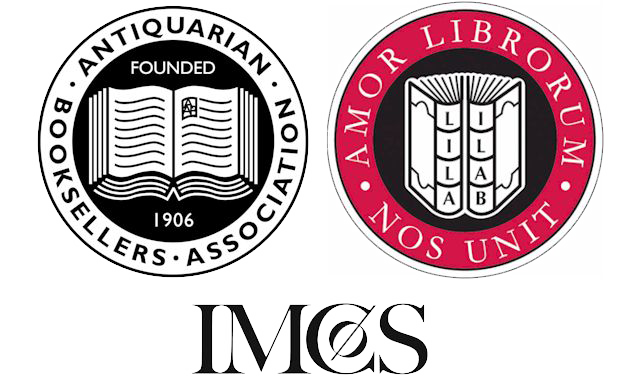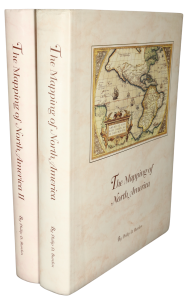Rare Maps and Prints
- World & Celestial
- North America
- West Indies, South & Central America
- British Isles
- British Isles
- English counties
- Large-scale
- Bedfordshire
- Berkshire
- Buckinghamshire
- Cambridgeshire
- Cheshire
- Cornwall
- Cumberland
- Derbyshire
- Devon
- Dorset
- Durham
- Essex
- Gloucestershire
- Hampshire
- Herefordshire
- Hertfordshire
- Huntingdonshire
- Islands
- Kent
- Lancashire
- Leicestershire
- Lincolnshire
- Middlesex
- Norfolk
- Northamptonshire
- Northumberland
- Nottinghamshire
- Oxfordshire
- Rutland
- Shropshire
- Somerset
- Staffordshire
- Suffolk
- Surrey
- Sussex
- Warwickshire
- Westmoreland
- Wiltshire
- Worcestershire
- Yorkshire
- Wales
- Scotland
- Ireland
- Western Europe
- Eastern Europe
- Middle East
- Africa
- Asia
- Australasia & Pacific
- Decorative Prints
- Title Pages
Mr. Philip D. Burden
P.O. Box 863,
Chalfont St. Giles, Bucks HP6 9HD,
UNITED KINGDOM
Tel: +44 (0) 1494 76 33 13
Email: enquiries@caburden.com
The atlas is usually attributed to Halley, but contributions were from co-author’s Daniel Defoe (1660-1731) and Nathanial Cutler who contributed the sailing directions. The atlas had a distinct commercial interest, Defoe being a merchant before becoming an author and publishing ‘Robinson Crusoe’ in 1719. This chart extends northwards on the west coast to ‘Baldivia’ (Valdivia) and ‘Anegada Bay’ on the Atlantic Coast. The central feature is Tierra del Fuego. As might be expected along with Spanish toponyms, many English ones occur to including references to Sir John Narborough and Sir Francis Drake. The Falkland Islands are represented by two incomplete islands. Interestingly there is no suggestion of a southern continent so often found on maps of the day. It was engraved by John Senex (c.1678-1740) who incorrectly placed plate number ’50’ lower right, here corrected to ’47’ by hand.
Halley was born 29 October 1656 in Shoreditch, northeast London, then in the country. He went to St. Paul’s School in London which counted among its old students the likes of John Milton and Samuel Pepys. It was whilst at school that Halley first measured the variation of the compass. In 1673 Halley entered Queen’s College, Oxford. Whilst still an undergraduate he published the first of some eighty papers in the ‘Philosophical Transactions’ on the problem of determining the orbit of a planet. In the same year he wrote to the Royal Society about the feasibility of producing a star catalogue of the southern hemisphere. It would complement that of the north produced by the likes of Hevelius, Cassini and Flamsteed. Approved by the King, Halley left for St. Helena for a year and produced a catalogue of over 340 stars which was published in 1678. His meeting with Newton in 1683 was instrumental in the publication of the ‘Principia Mathematica’, Halley paid for the printing. In 1686 he published what is considered the earliest meteorological chart in the ‘Philosophical Transactions’. It has no title but is often called his ‘Chart of the Trade Winds’.
From the early 1690s Halley had been negotiating with the Royal Society for the use of a ship on a voyage of scientific discovery. Granted the rank of Captain in the Royal Navy and with Royal approval he set sail in the ‘Paramore’ in 1699. The purpose of the voyage was to measure the variation of the compass throughout the Atlantic Ocean. He was hoping that a more measured approach over a large area might formulate a method of determining longitude, the holy grail of navigation. Halley’s sea voyage was the first undertaken for purely scientific purposes. Shortly after returning he published his map which contained about 150 observations. It is credited with being the first printed map to show isogones or lines of equal magnetic variation. Indeed, it is the first to introduce the idea of lines connecting equal values. Since then, isolines (lines connecting points of equal intensity) are found in all sorts of maps.
It was shortly after this period that Halley’s greatest claim to fame was published. In 1705 a paper he wrote for the ‘Philosophical Transactions’ using Newtonian physics predicted that a comet he had seen in 1682 would return every seventy-six years. It did, after his death, and it has been known by his name ever since. It had a profound effect on allaying popular fear of these celestial events. Halley died 14 January 1742 aged 85. He remained to his death a captain in the Royal Navy, Savilian Professor of Geometry at Oxford and Astronomer Royal. Provenance: Juan and Peggy Rada Collection. Phillips (1909-) 3298; Shirley (2004) M.Hall 1a no. 47.






